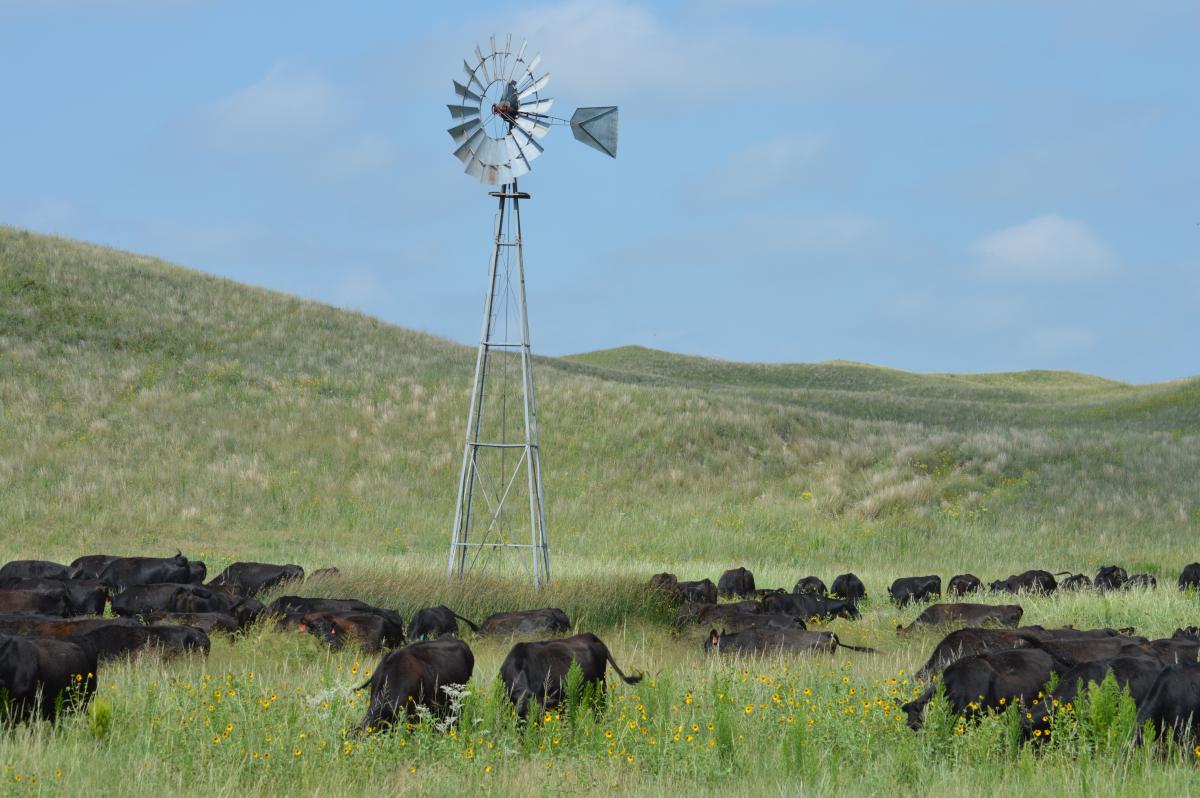
Crops, Cattle, Community, and Crisis
Nebraska Extension Addresses Extreme Weather Challenges for State Residents
Volatile weather conditions such as flooding, high winds, hail, blizzards, drought, or even tornados, can destroy entire livelihoods in just minutes – and in Nebraska, these conditions are highly likely. Weather impacts on Nebraska’s biological systems can take a toll on Nebraska’s agricultural industry.
As a response, Nebraska Extension offers crisis preparation and response programs for Nebraskans to not only mitigate weather damage, but also deal with the aftermath. The resources Nebraska Extension provides remedies the stress and effects they can have on the people, crops, and animals.
Two leaders in these efforts are Daren Redfearn, professor in the Department of Agronomy and Horticulture and Extension forage crop residue specialist, and Jennifer Rees, Extension cropping systems educator at the University of Nebraska–Lincoln.
“Agriculture is a primary industry in Nebraska and crucial for supporting the Nebraska economy,” Rees said. “But various stresses can occur impacting agriculture at any time. Nebraska Extension works with residents to reduce these stressors and help with decision-making in the aftermath.”
As if the financial benefits at stake are not enough for consideration, the physical and emotional health of industry producers can also be affected.
“These crises take an emotional toll on people because what is ruined is their livelihood,” Redfearn said. “The emotional toll is something we do not discuss often, but it is really the human component that we also deal with in crisis work .”
This emotional toll is what defines the overall response that Nebraska Extension offers state residents as they need it.
Nebraska Extension Responds
In response to crises, Nebraska Extension delivers information and offers resources such as guidance, analysis of operations, and mental wellness across the state.
In addition, Extension specialists are present after a catastrophic event, assisting communities in organizing steps forward.
Simply stated – Nebraska Extension adjusts to the needs of the people served in any crisis. Following the initial responses, programming is developed that is shared across the state.
For example, Nebraska Extension responded immediately following the 2013 hailstorm.
“In 2013, Clay County Nebraska had one of the worst hailstorms in recent history, resulting in a no recovery point for corn and beans,” Rees said. “Nebraska Extension put an emergency meeting together within 24 hours for local farmers, crop consultants, and insurance representatives to make plans on where to go next.”
Then, in 2014, a plan was created to mitigate hail damage – cover crops.
“Early in 2014 after another devastating, widespread hailstorm, Nebraska Extension developed a cover crop module for mitigating hail damage,” Redfearn said. “Cover crops were not as popular then, but they were a clear solution.”
These above examples then spurred organized programming – Hail Know, where Nebraska Extension offers guidance to make informed, timely decisions when hailstorms damage crops. For specific information on Hail Know, please visit https://cropwatch.unl.edu/hailknow.
Further, in 2019, Nebraska Extension extensively helped many across the state impacted by the ‘bomb cyclone’ blizzard and flooding. During this time, significant amounts of snow fell in a short amount of time and the rapid snowmelt following the storm cause historic flooding.
Farms and ranches lost significant numbers of livestock, entire communities were evacuated because they were underwater, and crop production was stunted, if not completely lost for the year. Through all of this, Nebraska Extension promptly responded and partnered with other organizations in the response.
In an effort to organize crisis response programming through Nebraska Extension, a new initiative Weather Ready Nebraska (to include Hail Know, among others) was developed.
Weather Ready Nebraska
Weather Ready Nebraska focuses on crisis response offered through Nebraska Extension.
Within all planning, successful crisis preparation strategies must include not only the physical business assets, but the human needs as well, Redfearn said.
Weather Ready Nebraska helps the state in four critical areas:
- Climate and weather literacy
- Scenario planning
- Field to market sustainability
- Weather event preparation related to agricultural needs
By analyzing all weather components in a given area, Rees said, crisis preparation and communication can better tackle local needs and potential problems with effective solutions.
Because weather information is now more readily available, community leaders and agricultural producers can now learn how to best prepare for conditions based on their needs.
“Throughout the year, ranchers can be affected by the same weather events as crop producers,” Redfearn said. “But livestock producers also must factor in blizzards and other extreme winter events for being weather ready.”
Weather Ready Nebraska is positioned to help residents prepare for these potential situations.
For more information about Weather Ready Nebraska, please visit weather-ready.unl.edu.
Key Takeaways
- Weather impacts on Nebraska’s biological systems can take impact Nebraska’s agricultural industry.
- Nebraska Extension offers crisis preparation and response programs for Nebraskans to not only mitigate weather damage, but also manage the aftermath.
- Extension specialists are also present after a catastrophic event, assisting communities in organizing steps forward.
- Weather Ready Nebraska focuses on crisis response by offering successful crisis preparation strategies for both physical business assets and human needs.
- For more information about Weather Ready Nebraska, please visit weather-ready.unl.edu.
